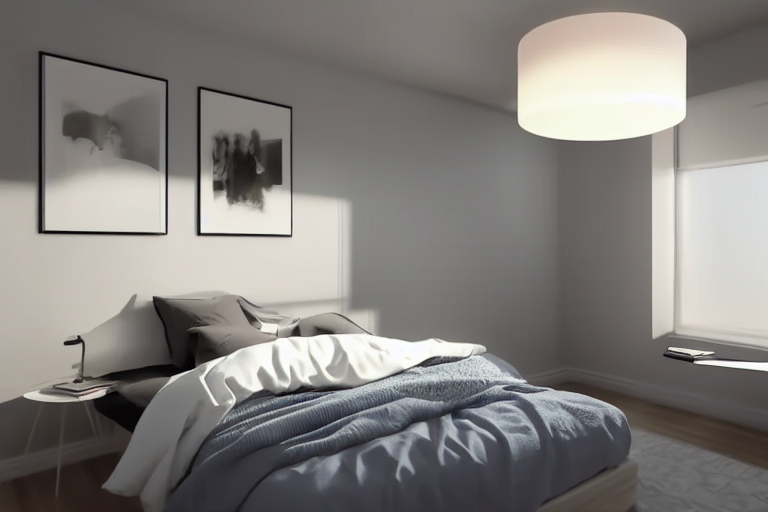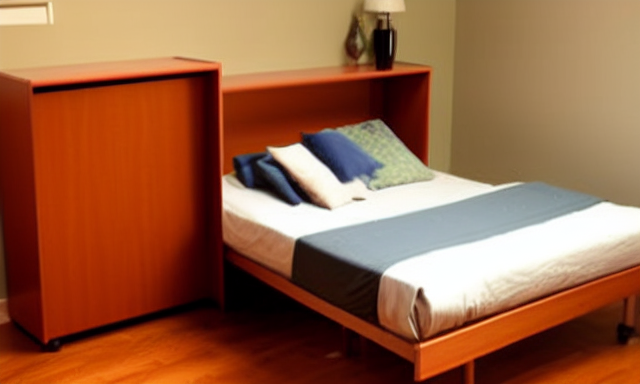In the heart of Singapore, where space is a premium, the quest for a living environment that offers tranquility, efficiency, and style becomes a necessity rather than a luxury. Many of us find ourselves overwhelmed by the clutter and chaos that modern life often brings into our homes. The overwhelming nature of our surroundings can lead to stress, discomfort, and a feeling of being trapped in our own spaces. The problem is clear: how do we create a home that not only reflects our personal taste but also provides a sanctuary from the outside world?
In This Article
ToggleThis is where Minimalist Home Interior Design steps in as a powerful solution. It addresses the clutter, the unnecessary, and the overwhelming, stripping away the excess to reveal a space that is both functional and serene. But more than just a design trend, minimalism offers a way to personalize your living space, making it uniquely yours while still embracing simplicity. With Todzterior’s commitment to affordability, personalized design, and comprehensive interior design services, this approach becomes accessible to everyone, not just a privileged few.
We Design Spaces That Speak Your Style
As interior designers, we don’t just renovate—we transform homes into personalized sanctuaries where beauty meets function.
Understanding Minimalism in Interior Design
When I think of minimalism in interior design, I am drawn to the idea of living with intention. Minimalism isn’t just about reducing clutter; it’s about creating space for what truly matters. In a minimalist home, every piece of furniture, every object, has a purpose. The design is stripped down to its essential elements, allowing the space itself to breathe. This is particularly important in Singapore, where homes are often compact, and every square foot counts.
The history of minimalism can be traced back to the post-war era, where the movement emerged as a reaction against the excesses of the previous decades. Minimalism sought to return to basics, valuing simplicity, functionality, and the beauty of clean lines. Over time, it has evolved to become a cornerstone of modern interior design, especially in urban settings like ours.
The core principles of minimalism—simplicity, functionality, and the use of clean lines—are more than just aesthetic choices. They are a way of life, a commitment to living with less so that we can enjoy more. In embracing these principles, I find that my home becomes a reflection of my values, a place where I can retreat from the world and recharge.

Key Elements of a Minimalist Home Interior Design
Space and Layout
The first thing that defines a minimalist home interior design is the use of space. In a city like Singapore, where every inch of space is precious, a minimalist approach maximizes the available area, creating a sense of openness and calm. The layout of a minimalist home is often open and airy, with rooms flowing seamlessly into one another. This not only makes the home feel larger but also enhances the functionality of each space.
For instance, by incorporating built-in storage solutions, I can keep my belongings out of sight, maintaining the clean lines that are so essential to minimalist design. This creates a sense of order and peace, which is invaluable in our fast-paced lives.
Color Palette
The color palette in a minimalist home interior design is usually neutral, with shades of white, beige, and gray dominating the space. These colors create a serene and calming environment, allowing the mind to rest. However, minimalism doesn’t have to be devoid of color. I like to introduce subtle accents—perhaps a muted green or a soft blue—that add warmth and personality without disrupting the overall harmony of the space.
Furniture and Decor
In minimalist design, less is more. The furniture in a minimalist home is functional and unadorned, often featuring clean lines and simple shapes. Each piece serves a purpose, whether it’s a sofa that doubles as storage or a dining table that can be extended for entertaining. The decor is equally restrained, with only a few carefully chosen items that add to the overall aesthetic without cluttering the space.
For example, a well-chosen piece of art can become the focal point of a room, drawing the eye and adding interest without overwhelming the senses. By focusing on quality over quantity, I find that my home feels more intentional and more reflective of my personal taste.
Materials and Textures
One of the joys of minimalist design is the use of natural materials. Wood, stone, and metal are often featured prominently, adding texture and warmth to what could otherwise be a cold and sterile environment. These materials are not only beautiful but also sustainable, aligning with a growing desire for eco-friendly living.
For instance, a wooden dining table with a smooth, natural finish adds warmth to the dining area, while a stone countertop in the kitchen provides both durability and elegance. The combination of these materials creates a balanced and harmonious space that feels both modern and timeless.
Lighting plays a crucial role in minimalist design. In my experience, natural light is the best way to enhance a space, making it feel larger and more inviting. Large windows, strategically placed mirrors, and sheer curtains can help to maximize the amount of natural light that enters the home.
When natural light isn’t enough, carefully selected artificial lighting can create a warm and welcoming atmosphere. In a minimalist home, lighting should be both functional and decorative, with fixtures that complement the overall design. Whether it’s a sleek pendant light over the dining table or recessed lighting in the living room, the goal is to create a space that feels both bright and cozy.
The Benefits of Minimalist Home Interior Design
Psychological Impact
Living in a minimalist home has a profound psychological impact. The simplicity and order of the space can reduce stress and anxiety, creating a calm and peaceful environment where I can truly relax. In a world that often feels chaotic and overwhelming, coming home to a space that is uncluttered and serene is a true luxury.
Sustainability
Minimalist design is inherently sustainable. By focusing on quality over quantity, I can reduce waste and make more eco-friendly choices. This might mean investing in durable, long-lasting furniture instead of cheaper, disposable pieces or choosing natural materials that have a lower environmental impact.
Cost Efficiency
One of the misconceptions about minimalist design is that it is expensive. However, by simplifying my space and focusing on the essentials, I actually find that I save money in the long run. Instead of buying more furniture or decor, I invest in a few high-quality pieces that will stand the test of time. This not only reduces clutter but also cuts down on unnecessary spending.
How can I renovate my home without having to spend all my time and energy on it?
How to Achieve a Minimalist Home Interior Design
Step-by-Step Guide
Achieving a minimalist home interior design is a process that requires thoughtful consideration and intentional choices. It starts with decluttering—removing items that no longer serve a purpose or bring joy. This can be a challenging but necessary step to create a space that feels open and serene.
Next, the layout is key. By rearranging furniture to create a more open and airy feel or investing in built-in storage solutions, I can ensure that every item has its place, contributing to a clutter-free environment. This not only enhances the functionality of the space but also aligns with the minimalist principle of ‘less is more.’
Common Mistakes to Avoid
One of the common mistakes people make when adopting a minimalist design is confusing minimalism with austerity. Minimalism is about simplicity and intentionality, not about stripping away comfort or personality. It’s important to infuse the space with elements that reflect who I am—whether it’s a favorite piece of art, a cozy throw, or a cherished family heirloom.
Another mistake is underestimating the importance of adequate storage. In a minimalist home, every item should have a designated place. Without proper storage, clutter can quickly accumulate, undermining the sense of order and peace that minimalism seeks to create. Investing in custom cabinets or multifunctional furniture, like a bed with built-in drawers, ensures that the space remains tidy and functional.
Sustainability
Sustainability is a cornerstone of minimalist design. By focusing on quality over quantity, I can reduce waste and make choices that are kinder to the environment. For example, opting for furniture made from sustainably sourced wood or using energy-efficient appliances are ways to align my home with eco-friendly principles. Moreover, choosing durable materials means that I’m not constantly replacing items, which reduces both waste and long-term costs.
As minimalist architect Ludwig Mies van der Rohe famously said, “Less is more.” This quote encapsulates the essence of minimalist home interior design—where simplicity leads to beauty, and intentional choices create spaces that are both functional and serene. When I apply this philosophy to my home, I find that it not only enhances the aesthetic but also contributes to a more sustainable and mindful way of living.
A minimalist home isn’t just about looking good—it’s about living well and making choices that reflect a commitment to sustainability. This might include using natural fibers for textiles, selecting low-VOC paints, or incorporating plants that purify the air. These choices contribute to a healthier living environment while also reducing my ecological footprint.
Personalizing Minimalism
Minimalism doesn’t mean sacrificing personal style. In fact, one of the beauties of minimalist design is its adaptability. While the core of minimalism is simplicity, it’s essential to tailor it to fit my lifestyle and preferences. For instance, if I love nature, I might incorporate natural materials like wood and stone throughout my home. Adding a few green plants can bring life and color to a minimalist space without overwhelming it.
Or perhaps, I’m drawn to a more modern aesthetic. In that case, I might choose sleek, contemporary furniture with clean lines and neutral tones. The key is to ensure that every element serves a purpose and adds to the overall harmony of the space. Todzterior’s expertise in personalized design ensures that minimalist interiors are not one-size-fits-all but are thoughtfully curated to reflect the individuality of those who live in them.


Minimalist home interior design is about more than just aesthetics; it’s about creating a space that reflects your values and enhances your quality of life. By focusing on simplicity, functionality, and personalization, I can create a home that is both beautiful and practical. Whether you’re looking to declutter your space, reduce your environmental impact, or simply create a more peaceful and serene living environment, minimalist design offers a powerful solution. And with Todzterior by your side, this journey becomes not only achievable but also deeply rewarding.
Looking To Upgrade Your Living Space?
Share your WhatsApp number, and we will call you soonAccreditation



Frequently Asked Questions
